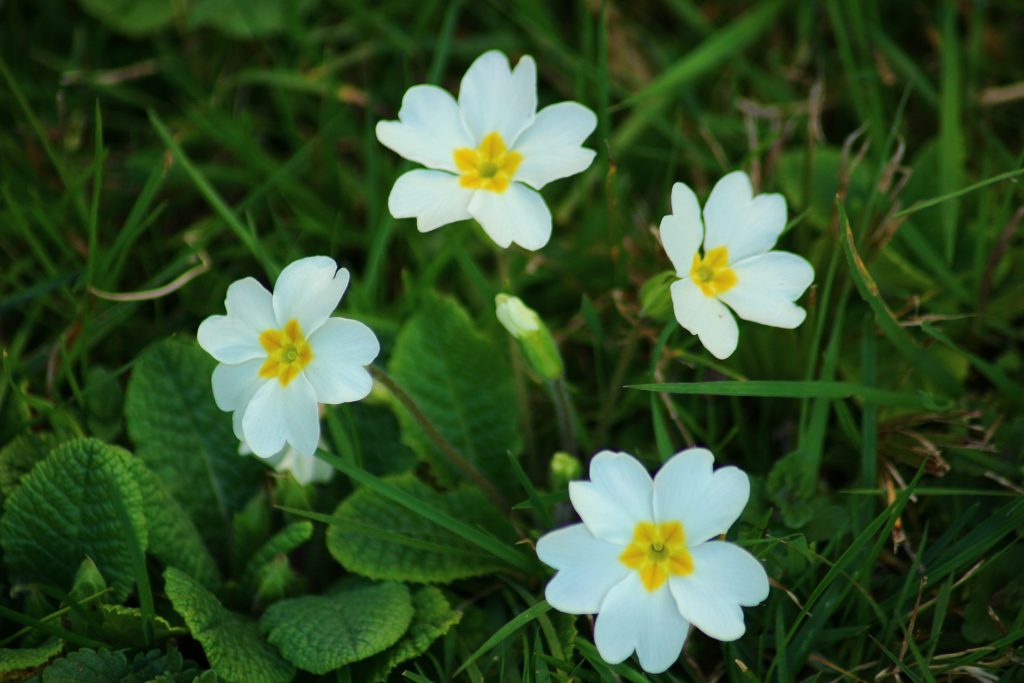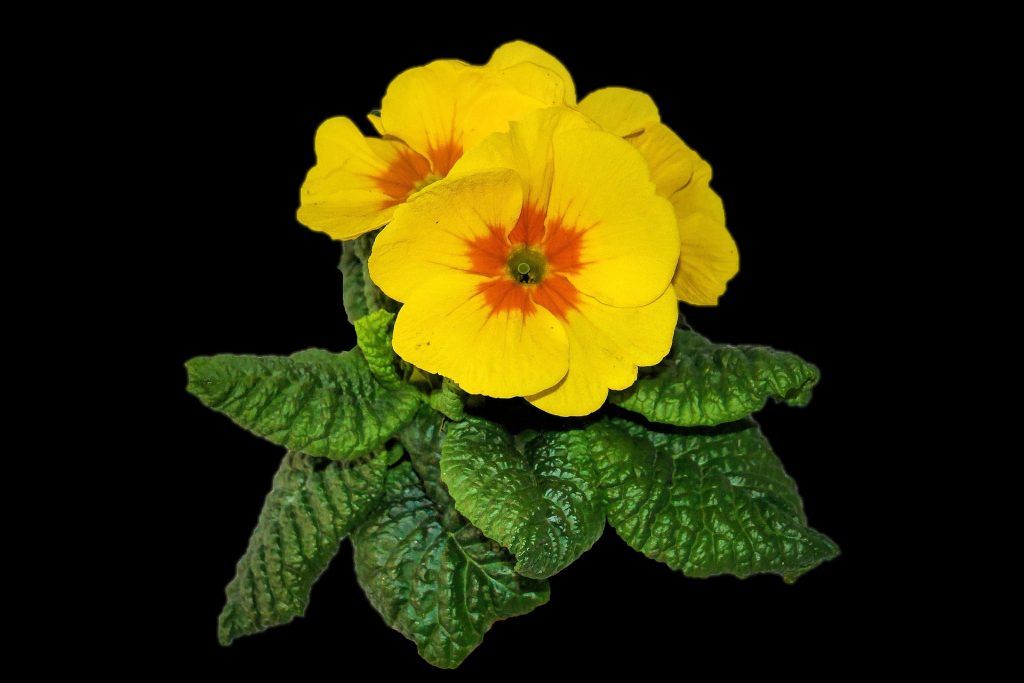 Primrose vulgaris is often commonly called the rimrose. Primrose is a flowering plant belonging to the Primulaceae family of flowering plants. The primrose is native to most of Europe, North Africa and parts of Asia. Primrose vulgaris is also called the a common or English primrose. The plant is a small woodland flowering plant with a height of around 30 cm and possesses a basal rosette of leaves that can remain all year round if conditions are favourable. The leaves are characterised by a heavy wrinkling, which along with the characteristic star-shaped flower makes the plant easily identifiable. The flowers are typically white or pale yellow or green, however coloured forms are seen naturally, and these can be a light pink colour. The entire primrose vulgaris plant is edible including the roots, stems, flower and petals. The aerial parts of the plant are nutritious, and can be a valuable source of phytochemicals, but the roots are thick and clumpy and provide a good source of energy in the form of carbohydrates and amino acids.
Primrose vulgaris is often commonly called the rimrose. Primrose is a flowering plant belonging to the Primulaceae family of flowering plants. The primrose is native to most of Europe, North Africa and parts of Asia. Primrose vulgaris is also called the a common or English primrose. The plant is a small woodland flowering plant with a height of around 30 cm and possesses a basal rosette of leaves that can remain all year round if conditions are favourable. The leaves are characterised by a heavy wrinkling, which along with the characteristic star-shaped flower makes the plant easily identifiable. The flowers are typically white or pale yellow or green, however coloured forms are seen naturally, and these can be a light pink colour. The entire primrose vulgaris plant is edible including the roots, stems, flower and petals. The aerial parts of the plant are nutritious, and can be a valuable source of phytochemicals, but the roots are thick and clumpy and provide a good source of energy in the form of carbohydrates and amino acids.

Primrose vulgaris is easily identifiable because of its very distinctive wrinkled leaves and white, yellow or light green flowers. The yellow flowers are high in carotenoids, and these include violaxanthin, lutein, and antheraxanthin. More green flowers contain mainly lutein and β-carotene. It is likely that all primrose flowers are high in carotenoids, but their the exact composition varies depending on the colour. Some primroses are bred to possess purple or pink coloured flowers and they may contain higher concentrations of flavonoids, particularly anthocyanins. These compounds act as antioxidants when consumed and are highly beneficial to animal and human health. In particular, lutein can accumulate in the eye and protect the retinal from sun damage, but all flavonoids and carotenoids may provide some general tissue protection from free radicals.

Primroses are an excellent source of food as the whole plant can be eaten. However it is the abundance throughout the year that make them such an excellent food source as they are so easy to find in large amounts.
Eat Well, Stay Healthy, Protect Yourself
RdB
